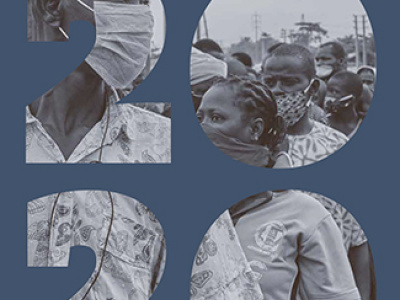2015 Global Development Challenges Series - Part 2
In the second of our blogs ahead of the 2015 Challenges Paper (released in January) Tony German, Executive Director of Development Initiatives shares his perspectives on the challenges for sustainable development in 2015 – and beyond.
2015 should be a critical year in shaping national and international action to end poverty by 2030 – and ensuring, in the words of the UN Secretary General’s High Level Panel, that we leave no one behind.
But the challenge for all of us in Europe and Africa – CSOs, academics, politicians, aid agencies and government departments – is to get beyond habits of mind and business as usual approaches of the last 50 years. We must focus on the opportunities of the next 15 years. Thinking based on 20th century development cooperation, rooted in ideas of north/south, donor/recipient, rich and poor countries is out of date.
Rivalry within and between institutions concerned with rights and development is part of the problem, not the solution. Wouldn’t it be refreshing to jettison our post colonial, pre-millennium baggage? There is a chance of new partnerships going beyond donor/ recipient assumptions and CSO, business and military stereotyping. The content of an idea or initiative – not its provenance – whether from UN, OECD, IFI, DAC donor or provider of southern cooperation, from Europe or Africa – should determine whether it gets attention and buy in.
Most of what I have seen of the post 2015 process to date is stuck firmly within a development mindset of poverty and exclusion ‘over there’. Yes, most children who grow up stunted or never reach their 5th birthday, most girls denied school and women dying in childbirth, live in ‘traditional’ developing countries. But we all know that the factors which cause and perpetuate poverty exist in every country – and that the majority of people in $1.25 a day poverty now live in ‘MICs’ (itself a categorisation long past its sell by date).
The HLP report and the emerging global goals speak to a universality agenda – requiring action in every country. On ageing and disability I have seen CSOs get beyond traditional development partners – to make common cause with counterparts working on similar issues in other countries. But whether we are working on nutrition (over or under), the LGBT agenda or many other issues which cause exclusion and immiseration in every country, the post 2015 goals, indicators and follow up monitoring offer opportunities for broader cooperation.
In Europe, Africa and beyond, the pendulum is swinging from a strong MDG oriented poverty focus in aid, to a new focus on the role of the private sector, economic development, energy and infrastructure. There is both danger and opportunity here. ODA is the only global resource earmarked for the promotion of economic development and welfare. The danger is that ODA will be spent on things for which other resources are now available.
Investments to End Poverty in 4 minutes
In future, ODA should be redefined so that its explicit purpose is poverty reduction measured by impact on the bottom 20% of people globally. Agencies with a legal mandate to end poverty allocate 80% of ODA to countries with high poverty rates – agencies where poverty reduction is not a specified goal allocate 31%.
We have a chance to harness a much wider range of resources to end poverty. There is a challenge here. I’m weary of talk of pro poor growth and inclusive growth and the potential of the private sector - which is not backed up by evidence that the poorest are actually benefiting. In many countries within Africa, and within Europe, growth and its dividend in terms of livelihoods and incomes, is not reaching the poorest 20%.
Unequal distribution of the benefits of investment is not sustainable; neither is it going to contribute to stability and security in Africa or Europe. So yes, we need the private sector to engage more, to provide energy, innovation, investment and expertise. And we need the private sector to deliver these things transparently - and to be clear about the different sorts of value that add up to a fair and sustainable, as well as profitable, bottom line.
The call for a data revolution to help end poverty is critical. To use all resources (government, private sector, CSO and official aid) efficiently and accountably we need better data on how money is spent. We need a quantum leap in the availability of data on poverty, especially gender disaggregated data and statistics on the incomes and wellbeing of each quintile. Otherwise how can we tell if action on gender or poverty is working? The acid test of whether the post 2015 goals have been worth all the talk is whether the poorest 20% are better off, better fed, better educated, with better health and greater opportunity. So let’s invest in measuring this and use information to empower at every level, so that all resources are harnessed to achieve the goals and to end extreme poverty and inequity by 2030.
Tony German is Executive Director of Development Initiatives.
He can be contacted at tony@devinit.org
The views expressed here are those of the author, and not necessarily those of ECDPM.
Read 'Finishing the Job and Building Bridges to the Future' by Amina Mohammed

